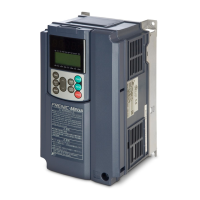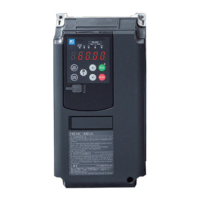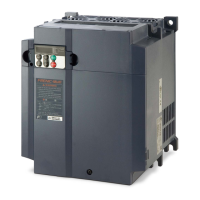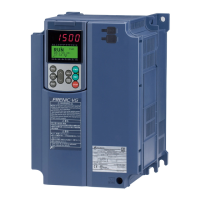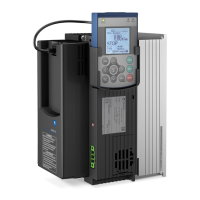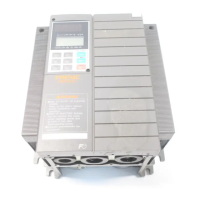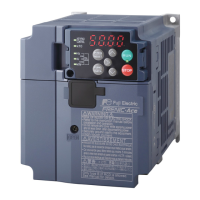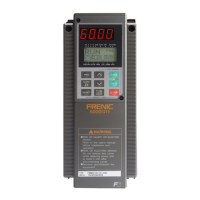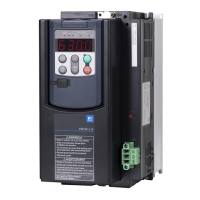10.1 Selecting Motors and Inverters
10-15
Chapter 10 SELECTING OPTIMAL MOTOR AND INVERTER CAPACITIES
[4] Calculating the RMS rating of the motor
In case of the load which is repeatedly and very frequently driven by a motor, the motor current fluctuates largely
and enters the short-time rating range of the motor repeatedly. Therefore, you have to review the allowable
thermal rating of the motor. The heat value is assumed to be approximately proportional to the square of the
motor current.
If an inverter drives a motor in duty cycles that are much shorter than the thermal time constant of the motor,
calculate the "equivalent RMS current" as mentioned below, and select the motor so that this RMS current will not
exceed the rated current of the motor.
Figure 10.1-13 Sample of the Repetitive Operation
First, calculate the required torque of each part based on the speed pattern. Then using the torque-current
curve of the motor, convert the torque to the motor current. The "equivalent RMS current, Ieq" can be
finally calculated by the following equation:
I
1
2
• t
1
+I
2
2
• t
2
+I
3
2
• t
3
+I
4
2
• t
4
+I
5
2
• t
5
t
1
+t
2
+t
3
+t
4
+t
5
+t
6
I
eq
=
(A) (10.26)
The torque-current curve for the dedicated motor is not available for actual calculation. Therefore,
calculate the motor current I from the load torque τ
1
using the following equation (10.27). Then, calculate
the equivalent current Ieq:
τ
1
× It
100
I =
(A) (10.27)
100
2
+ Im
100
2
Where, τ
1
is the load torque (%), It
100
is the torque current, and Im
100
is exciting current.

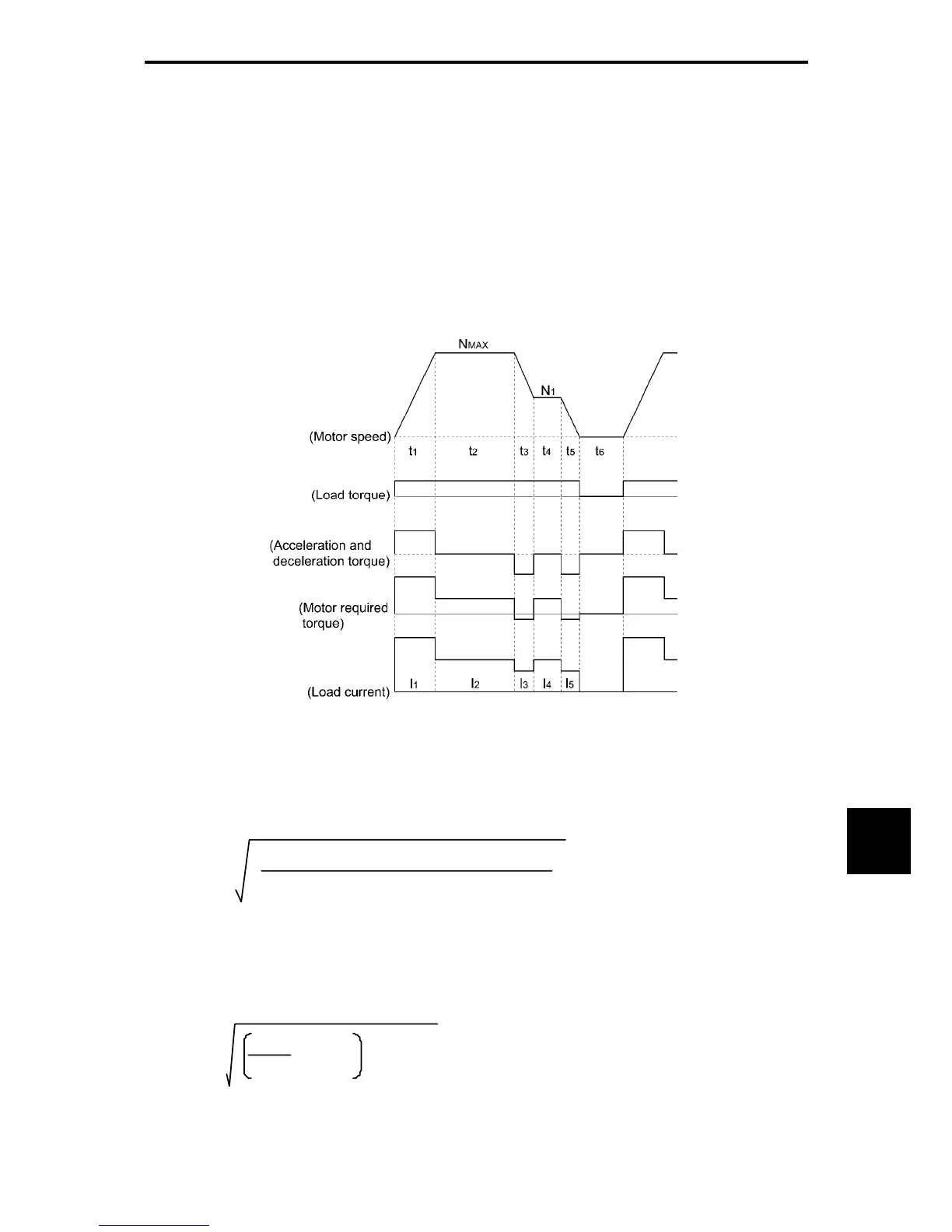